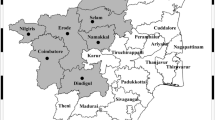Abstract
Between 1968 and 1980, 98 eggs were collected from active nests of the common loon (Gavia immer) in Ontario. Residues of ⌆DDT and PCB declined over this period while dieldrin and Hg appeared unchanged. Eggs collected in 1969 and 1970 had significantly thinner shells than eggs from a collection made before 1947. Between 1969 and 1979, 215 common loon carcasses were collected across Ontario, the result of having been drowned or shot or having died of diseases or unknown causes. Chemical analyses of 174 carcasses taken from healthy birds showed that adult loons accumulated higher levels of organochlorine and Hg residues than did juveniles. Tissues with high fat contents contained higher organochlorine levels while kidney, liver, and feathers had the highest Hg levels. Thirty loons were found to be emaciated with visibly lesser amounts of body fat and significantly lower levels of lipids in pectoral muscle tissue. Organochlorine but not Hg residues were one to two orders of magnitude higher in the wet tissues of emaciated birds than healthy birds. Higher residues of organochlorine chemicals were found in the uropygial gland, the oil secreted by this gland and belly and back feathers of emaciated birds when compared to healthy birds. It was concluded that losses of organochlorine chemical residues could occur through this gland. While Hg levels in feathers were elevated, Hg did not accumulate in the uropygial gland or in the secreted oil and was not the route for Hg content in feathers.
In emaciated birds, mean brain levels of ⌆DDT (primarily DDE) were between 25 and 49 Μg/g, dieldrin 0.5 to 1.2 Μg/g, PCB 39 to 63 Μg/g, and mercury 1.0 to 1.8 Μg/g. The mean brain levels in healthy birds were between 0.2 and 0.9 Μg/g ⌆DDT, 0.01 and 0.05 Μg/g dieldrin, 0.6 and 2.0 Μg/g PCB, and 0.4 and 0.6 Μg/g mercury.
Similar content being viewed by others
References
Bogan J. A., and I. Newton: Redistribution of DDE in sparrowhawks during starvation. Bull. Environ. Contam. Toxicol.18, 317 (1977).
Charnetski, W. A., and W. E. Stevens: Organochlorine insecticide residues in preen glands of ducks: Possibility of residue excretion. Bull. Environ. Contam. Toxicol.12, 672 (1974).
Dindal, D. L.: Accumulation and excretion of Cl36DDT in mallard and lesser scaup ducks. J. Wildlife Manage.34, 74 (1970).
Fox, G. A., K. S. Yonge, and S. G. Sealy: Breeding performance, pollutant burden, and eggshell thinning in common loonGavia immer nesting on a Boreal Forest Lake. Ornis Scandinavica11, 243 (1980).
Frank, R., H. E. Braun, M. Holdrinet, D. P. Dodge, and S. J. Nepszy: Residues of organochloride insecticides and polychlorinated biphenyls in fish from Lakes Saint Clair and Erie, Canada 1968–76. Pestic. Monit. J.12, 69 (1978).
Gaskin, D. E., K. Ishida, and R. Frank: Mercury in harbour porpoisesPhocoena phocoena from the Bay of Fundy region. J. Fish Res. Board Can.29, 1644 (1972).
Greichus, Y. A., and A. Greichus: Dieldrin —14C residues in feathers of birds with surgically removed uropygial glands. Bull. Environ. Contam. Toxicol.12, 413 (1974).
Hatch, W. R., and W. L. Ott: Determination of sub-microgram quantities of mercury by atomic absorption spectrophotometry. Anal. Chem.40, 2085 (1968).
Holdrinet, M.: Determination and confirmation of hexachlorobenzene in fatty samples in the presence of other halogenated hydrocarbon pesticides and PCBs. J. Assoc. Off. Anal. Chem.57, 580 (1974).
—: Confirmation of mirex andcis- andtrans-chlordane in the presence of other organochlorine insecticides and polychlorinated biphenyls. Bull. Environ. Contam. Toxicol.21, 46 (1979).
Johnston, D. W.: Organochlorine pesticide residues in uropygial glands and adipose tissue of wild birds. Bull. Environ. Contam. Toxicol.16, 149 (1976).
Langlois, E. B., A. R. Stemp, and B. J. Lisk: Analysis of animal food products for chlorinated insecticides. J. Milk and Food Technol.27, 202 (1964).
Parslow, J. L. F., and D. J. Jeffreis: Relationship between organochlorine residues in livers and whole bodies of Guillemots. Environ. Pollut.5, 87 (1973).
—: Gannets and toxic chemicals. Brit. Birds70, 366 (1977).
Prouty, R. M., J. E. Peterson, L. N. Locks, and B. M. Mulchern: DDD poisoning in a loon and the identification of the hydroxylated form of DDD. Bull. Environ. Contam. Toxicol.14, 385 (1974).
Reynolds, L. M.: Pesticide residue analysis in the presence of polychlorinated biphenyls (PCBs). Residue Rev.34, 27 (1971).
Sileo, L., L. Karstad, R. Frank, M. V. H. Holdrinet, E. Addison, and H. E. Braun: Organochlorine poisoning of ringbilled gulls in Southern Ontario. Wildl. Dis.13, 313 (1977).
Sodergren, A., and S. Ulfstrand: DDT and PCB relocate when caged robins use fat reserves. Ambio1, 36 (1972).
Stickel, W. H., L. F. Stickel, and J. W. Spann: Tissue residues of dieldrin in relation to mortality in birds and mammals. In: Chemical Fallout. Proceedings of the first Rochester Conference on Toxicity. Springfield, Ill: Charles C. Thomas (1969).
Stickel, W. H., L. F. Stickel, and F. B. Coon: DDE and DDD residues correlated with mortality of experimental birds. In: Pesticides Symposia. Inter-American Conference on Toxicology and Occupational Medicine. Miami, FL: Hale and Associates, Inc. (1970).
Stickel, W. H.: Some effects of terrestrial ecosystems. In: Ecological Toxicology Research. New York: Plenum (1975).
Sutcliffe, S. A.: Pesticide levels and shell thickness of common loon eggs in New Hampshire. Wilson Bull.90, 637 (1978).
Suzuki, T.: Neurological symptoms from concentration of mercury in the brain. In: Chemical Fallout. Proceedings of the First Rochester Conference on Toxicity. Springfield, Ill: Charles C. Thomas (1969).
Thompson, N. P., C. H. Courtney, D. J. Forrester, and F. H. White: Starvation—pesticide interactions in juvenile brown pelicans. Bull. Environ. Contam. Toxicol.17, 485 (1977).
Vermeer, K.: Some aspects of the breeding and mortality of common loons in east-central Alberta. Can. Field Naturalist,87, 403 (1973).
Author information
Authors and Affiliations
Additional information
Ontario Ministry of Natural Resources, Wildlife Research Contribution No. 82-09
Rights and permissions
About this article
Cite this article
Frank, R., Lumsden, H., Barr, J.F. et al. Residues of organochlorine insecticides, industrial chemicals, and mercury in eggs and in tissues taken from healthy and emaciated common loons, Ontario, Canada, 1968–1980. Arch. Environ. Contam. Toxicol. 12, 641–653 (1983). https://doi.org/10.1007/BF01060746
Received:
Revised:
Issue Date:
DOI: https://doi.org/10.1007/BF01060746




